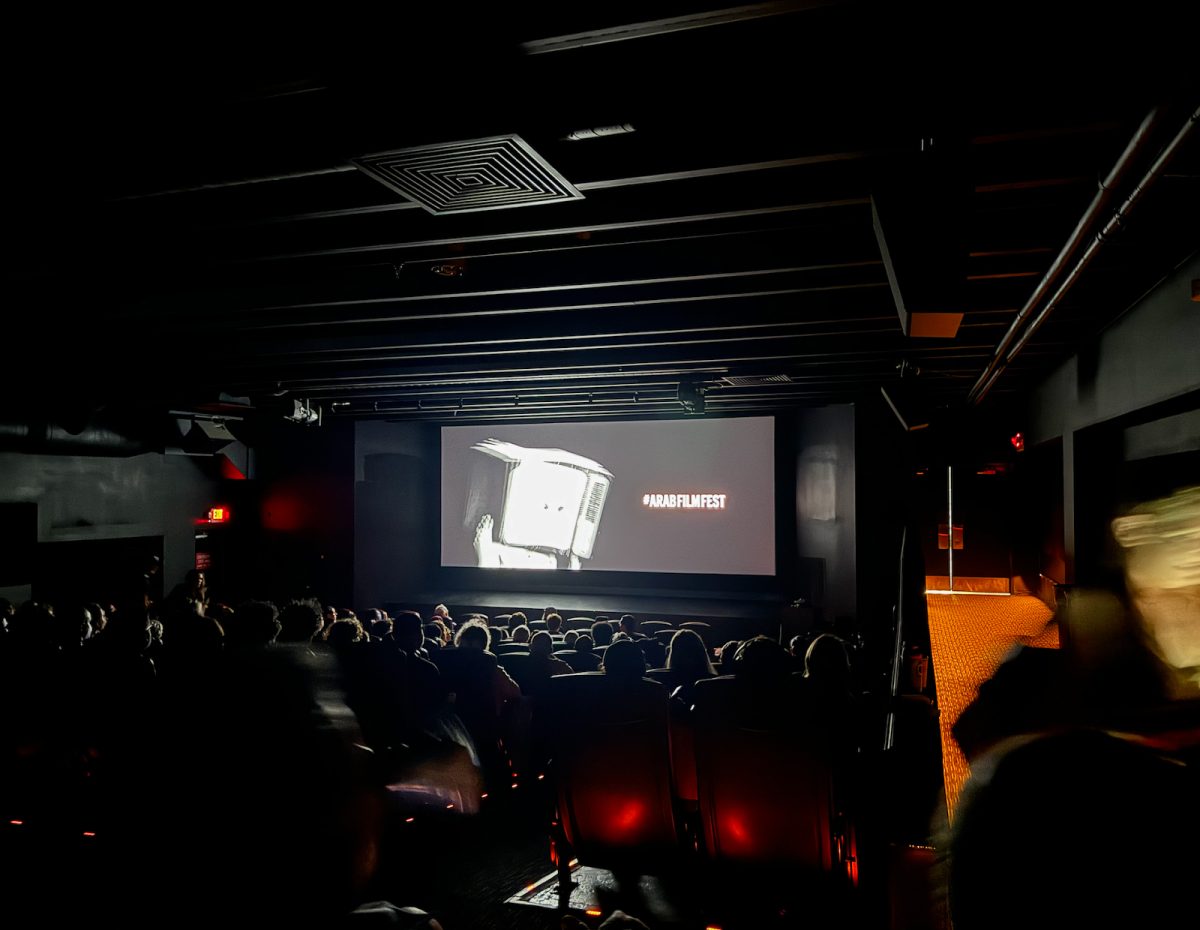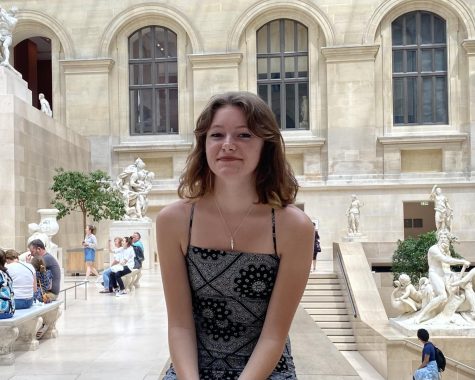This article contains spoilers.
Cinema is back, baby. “Dune: Part Two” hit theaters March 1 after a delay in production due to strikes in Hollywood and let us tell you, the wait was worth it. The film, already amassing over 5 million U.S. dollars worldwide at the box office, is the second installment of the two-part series by Director Denis Villeneuve based on the 1965 novel “Dune” by Frank Herbert. With a star-studded cast and industry legends behind the camera, the film is a spectacle by all means.
Where the first film, “Dune: Part One,” took time to build the world through long, atmospheric shots, the second is chock-full of action. Scenes move quickly across storylines, from action-heavy shots filled with visual and audial elements into intimate conversations between characters, making for a fast-paced film that contrasts the serene stillness of the first.
This film claims more of the book’s plot than the first, packing huge amounts of information into its two-hour and 46-minute runtime and newly introducing characters that Herbert had included from the beginning of the novel. While this creates a stimulating and compelling story, it means some scenes are more fleshed out than others, and reads as less of an intentional decision and more of a scramble to make sure all the plot aspects needed for a third film were included.
The film begins right where the first left off, prefacing with a short recount of the previous film’s events by Princess Irulan (Florence Pugh). Then, “Dune: Part Two” brings viewers to the planet
Giedi Prime, where rival House Harkonnen’s Baron Vladimir Harkonnen (Stellan Skarsgård) appoints Glossu Rabban Harkonnen (Dave Bautista) commander of Harkonnen forces. Paul Atreides (Timothée Chalamet) and Chani (Zendaya), meanwhile, are under attack from Harkonnen soldiers, which we see unfold in the following scene before joining them in returning to the Fremen community, Sietch Tabr, amongst the rock cliffs of the desert planet Arrakis.
Arrakis, where the majority of the film takes place, was shot in the Wadi Rum desert in Jordan. “Star Wars” and “The Martian” were also shot here for its other-worldly desert-scapes, all three using the environment to transport viewers into the narrative. “Dune,” however, stands out for being shot almost exclusively on sight and in natural light, with Villeneuve and Director of Cinematography Greig Fraser working to stretch the limits of what is possible with the lens.
The scenes that take place on the planet Giedi Prime, home to rival House Harkonnen, are shot in infrared to account for the planet’s black sun. The longest sequence on this planet is a gladiator scene displaying the power of Feyd Reutha (Austin Butler), heir to the Harkonnens. This scene is a standout in the film; it is a testament to both Herbert and Villeneuve’s world-building skills, showcasing a visually distinct alternative society.
Hans Zimmer’s work as composer for “Dune: Part One” was nothing short of a masterpiece, so there were high expectations for his second soundtrack. Zimmer did a great job of weaving his scores from the first film into the second in skillful reprises and reworkings, creating even more complex audioscapes. His pieces are instrumental in immersing the audience into the world of “Dune,” so understandably, this score was very similar to the first. Though it was a talented expansion on the first, there was a bit left to be desired when it came to new sounds. Where the first film’s tracks really showcased Zimmer’s prowess as a composer, the second felt like more of a reiteration of an already perfect work. Not to mention, the lack of bagpipes — or electric guitar made to sound like bagpipes — was disheartening to say the least.
A common and impressive motif that Villeneuve peppers throughout the film are shots of huge crowds moving as a unit, often singling out a person moving in an opposite direction. Shots like these serve to show the scale of the events happening in the film, from depicting the number of soldiers sent to Arrakis by the emperor and the Harkonnens to the sheer number of Fremen followers Paul has amassed by the end of the film. These macro shots draw an interesting parallel to the many micro shots of grains of sand dancing across the dunes, invoking themes of the collective versus the individual.
Villeneuve is no stranger to the use of scale in his films, and nowhere is this more evident than in shots of Shai Hulud, the name given to the many sandworms living on Arrakis. In the climax of the film, Paul leads Fremen troops to attack the Emperor and the Harkonnens, managing to harness three sandworms who face the audience head-on as they breach the surface of the sand. If the film had not yet convinced audiences that the cinematic spectacle is alive and well, this scene drove the point home.
In an unprecedented filmic undertaking, Villeneuve dedicated an entire unit to the design, filming and editing of the notorious sandworms. The scene in which Paul rides a grandfather sandworm is more than five minutes in length and took 44 days to shoot. It follows Paul as he calls a sandworm with a thumper, a rhythmic device that attracts the worms, and mounts the worm with rein-like grapple hooks. Looking on are the Fremen, who view this triumph as proof of Paul’s claim to Muad’dib, the messiah who is said to free Arrakis from oppression and turn the planet back into the plentiful jungle it once was.
Villeneuve famously works with minimal dialogue, letting the images speak for themselves. However, special care went into the development of the Fremen language, Chakobsa. Derived from Arabic for the purpose of this film, much of the dialogue is spoken in the fully structured language and subtitled in English. When characters speak in English, it is plain American English, leaving much to be desired in both the writing and deliver of lines.
Butler, who arguably had the most compelling performance in the film, was transformed into a creepy bald and black-tongued Harkonnen, presenting a testament to the feats of the costume, hair and makeup departments’ work. Costume Designer Jacqueline West shared post-production the scale of their work; her team oversaw the making of about 4,000 pieces.
Though not as captivating, Princess Irulan’s costuming was hypnotic, commanding the screen for the few scenes she graced. Both royal and Joan of Arc-esque, West described the styles as “modieval,” medieval with a modern twist. And that it was, with inventive chainmail headdresses contrasted with flowing silks and linens, signifying the Bene Gesserit grip on her character, topped with an elegant slicked-back bob.
No costume was created without careful thought to the plot of “Dune” and the Bene Gesserit are no exception. A sisterhood who discretely influences the events of the empire to fulfill a grand religious plan to bring about the Kwisatz Haderach, a male Bene Gesserit who inherits the memories of his ancestors. They are famously concealed by large box-like veils and black flowing cloaks to obscure their figures almost entirely. However, they come into conflict with a former student of their teachings, Lady Jessica Atreides (Rebecca Ferguson), who becomes the Fremen Reverend Mother partway through the movie. This conflict between the sisterhood and Lady Jessica is represented in her costuming. Her face elegantly covered by tattooed words depicting the Fremen prophecy and garb colored like the dunes around her inspired by Egyptian sarcophagi brings attention to her character, in stark contrast with the uniformity of Bene Gesserits before her. This becomes a representation of a turning point in the film towards the fulfillment of the prophecy.
Though Villeneuve stayed true to the latter half of the book, he did take some creative liberties with Chani. Villeneuve builds on Herbert’s framework of the character, making her much more reluctant to believe Paul to be the Muad’dib. Paul gains Chani’s trust through his repeated denouncement of his messiah-hood, stating that the people of Arrakis, the Fremen, can only be freed by one of their own, a belief that Chani and other Fremen hold dear, contrary to what the Bene Gesserit have been spreading throughout the land, that Paul is the voice from the outer world.
Despite this, Paul goes on to become the white savior he may have always been destined to be, starting the holy war he feared all along in the name of freeing the Fremen, but also as revenge for his father’s death in the previous film. Herbert’s novel ends with Chani opting to be Paul’s concubine after he decides to wed Princess Irulan as a grab for power, a choice that never quite seemed to align with her characterization throughout the rest of the story.
In a choice that seems to acknowledge the white savior plot line more overtly than Herbert ever did, Villeneuve has Chani leave Paul without a word, ending the film on a shot of her pensive face as she rides a sandworm away from what has become the holy war. The change to make Chani more resolute in her convictions is a welcome one, which not only creates an interesting contrast with Paul whose character is interesting due to the internal moral dilemma he battles throughout the story, but also makes Chani more believable.
Disappointing in some ways, the film was left unresolved in its final minutes, opening the door for a revisit to the “Dune” universe. Zimmer recently confirmed the production of a third film, “Dune: Messiah,” in an interview with Vanity Fair, but information is few and far between.
Together, “Dune: Part One” and “Dune: Part Two” will go down in history as a significant feat of filmic mastery. These two truly epic films should be experienced on the big screen where Villeneuve’s mastery of scale can be best appreciated. If you’re waiting for it to come out streaming to watch, maybe for the second time like us, “Dune: Part Two” will be available to stream on Warner Brothers platform MAX this spring, but no date has been set.









